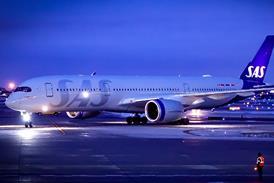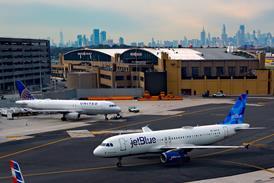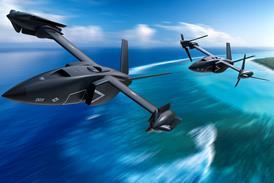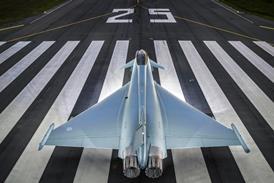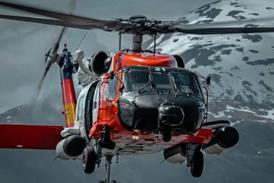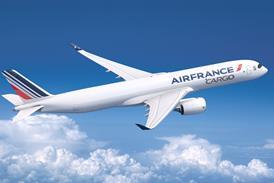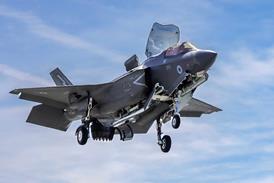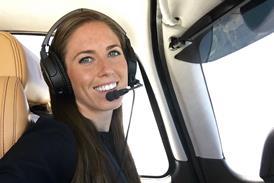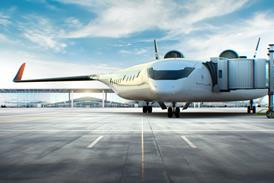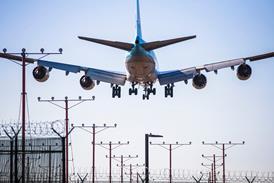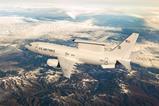The US Air Force (USAF) is demonstrating significant advancements in the ability of its existing fighter aircraft to integrate with and control new pilotless combat jets.
During recent training exercises in Florida, pilots operating a Lockheed Martin F-16C and Boeing F-15E both successfully controlled two Kratos XQ-58A Valkyrie uncrewed aircraft.
The Air Force Research Laboratory (AFRL) says the scenario showcased the ability to achieve real-time integration between manned and semi-autonomous systems like the XQ-58A, which are known by the umbrella term autonomous collaborative platforms (ACPs).
“This test with ACPs directly addresses the evolving requirements of modern warfare and the needs articulated by our war fighters,” says General Kenneth Wilsbach, head of the service’s Air Combat Command that oversees fighter operations.
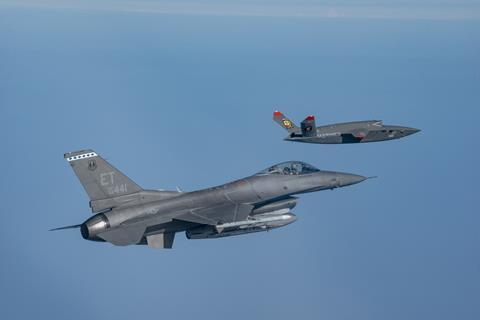
Specific details of the flight profile were not immediately released by the air force. Single XQ-58s have previously operated alongside F-16s and newer Lockheed F-35B fighters from the US Marine Corps (USMC).
The latest milestone indicates larger numbers of ACPs are able to be simultaneously controlled by existing combat jets, a concept which is central to the USAF’s long-term modernisation strategy.
The AFRL describes ACPs as a “key enabler of future air power”, offering affordable, “runway-flexible capabilities” that can operate in high-threat environments without risking a human crew.
“This recent flight marked a pivotal step in their integration into air combat – reducing pilot workload while enhancing situational awareness and mission effectiveness,” the AFRL says.
The lab’s commander Brigadier General Jason Bartolomei says the successful integration of multiple Valkyries with the F-15E and F-16C marks a “crucial step in developing capabilities that harness human-machine teaming to overcome complex threats and expand our advantages”.
The milestone shortly follows news from Australia that Boeing and the Royal Australian Air Force (RAAF) successfully integrated multiple Australian-designed MQ-28 uncrewed aircraft with a RAAF Boeing E-7 airborne early warning and control jet.
Wilsbach says integrating ACPs into standard operational concepts for air combat will be critical in maintaining the USA’s ability to achieve air superiority in the future.
While the air force does not plan to field the Valkyrie UAV operationally, the service is preparing to launch flight testing on its first generation of uncrewed fighters. Two prototypes – the General Atomics Aeronautical Systems YFQ-42A and Anduril’s YFQ-44A – are set to take flight for the first time in the coming weeks.
In the meantime, the XQ-58 can serve as a stand-in for testing operational concepts and technical requirements for integrating ACPs. The USMC is still evaluating the Kratos jet for possible operational use in roles including the suppression of enemy air defences and electronic warfare.
The air force says data from the ongoing XQ-58 flight tests will inform the development of future autonomous aircraft.
The service plans to field hundreds of operational ACPs in the coming years under its Collaborative Combat Aircraft programme.
Congress recently approved $678 million under the Trump Administration’s “Big Beautiful Bill” spending plan to accelerate the delivery of the first aircraft from that programme.



